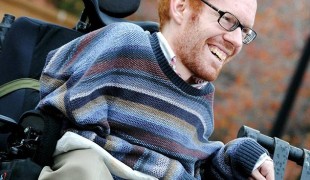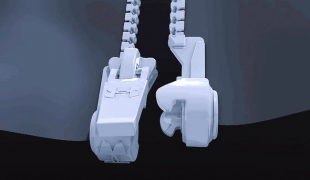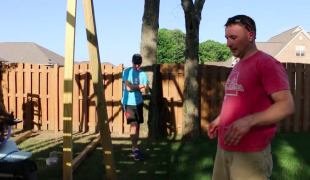- 6416
- 275
- 6
- 5
- 0
- Help Ukraine
About the solution
Kavita is not able to move out of her wheelchair due to her condition. Because she believes disabled people should be able to try to be more independent, she already came up with several assistive robotic devices that can help people with disabilities to have greater physical independence.
“It’s about increasing independence for people with severe physical disabilities. I have a number of prototypes for assistive robotics that can increase physical independence - such as repositioning limbs, transferring, personal care and mobility. The most significant aspect of my thesis is that even though the technology and hardware needed exist, sometimes having accessibility to control them is very difficult. For someone with a severe disability like myself, there are special keyboards to use the computer, and that helps. However, there is very limited research in the areas of robotics and accessibility”, the inventor explained.
One of Kavita’s prototype consists of a robotic mattress, which was the core of her PhD dissertation defence. This innovation is a small-scale prototype of a robotic air mattress that features a number of air chambers that can be inflated or deflated using a web interface. This means the user can alternate pressure settings. This can help patients who are not able to move but need frequent repositioning so that they can have pressure relief and better rest.
The inventor doesn’t want to stop and will keep working on using technology to help herself and others in need. “I’m excited about more physical independence through telepresence. I want to travel to more places, interact with more people, and see more assistive robotics that can increase mobility for people with disabilities. To improve the quality of life, people should be as independent as possible and new technology can help accomplish that. One of the prototypes I’m working on is a device that can move human arms and legs so that if I need assistance, I can use an Internet accessible telepresence interface to move myself safely. I know that will be achieved in the next five years”, Kavita observed.
More info: https://www.csee.umbc.edu/~kavi1/
Adapted from: https://bit.ly/2FRX30K
https://bit.ly/2HUV2Dc
https://bit.ly/2FIUQDw
https://bit.ly/2OEWj1K
https://youtu.be/nEi1zbIDHNI
This solution shall not include mention to the use of drugs, chemicals or biologicals (including food); invasive devices; offensive, commercial or inherently dangerous content. This solution was not medically validated. Proceed with caution! If you have any doubts, please consult with a health professional.
DISCLAIMER: This story was written by someone who is not the author of the solution, therefore please be advised that, although it was written with the utmost respect for the innovation and the innovator, there can be some incorrect statements. If you find any errors please contact the patient Innovation team via info@patient-innovation.com
-
-
363
-
0
-
12851

Men invent human backpack to carry their friend
-
-
-
384
-
0
-
10404

Mother and son create magic zipper
Muscular dystrophy
Physical disability
Myotonic dystrophy
reduced mobility
Hemiplegia
Hemiparesis
Neuromuscular disorders
Forearm fracture
Hand-arm vibration syndrome
Limb amputation
Limb traumatic amputation
Traumatic amputation
Becker's muscular dystrophy
Bulbospinal muscular atrophy congenital
Duchenne muscular dystrophy
Fibromuscular dysplasia
Muscular weakness
Neuromuscular blockade
Neuromuscular junction dysfunction
Progressive muscular atrophy
Spinal muscular atrophy
Cerebellar ataxia
Upper limb
Arm
Hand
Finger
Clothes
Dressing
Arm weakness
Lack of strength
Muscle contractions involuntary
Muscle atrophy
Musculoskeletal disorder
Muscle disorder
Neuromyopathy
Loss of fine motor skills
-
-
-
352
-
0
-
9264

Swing for wheelchair users
Spinal muscular atrophy
Quadriparesis
Paraplegia
Amyotrophic lateral sclerosis
Cerebral palsy
Muscular dystrophy
Developmental motor skills disorders
Motor neurone diseases
Angelman's syndrome
Tetraplegia
Duchenne muscular dystrophy
Spinal cord and nerve root disorders traumatic
Physical disability
Leg
Wheelchair
Recreation and Leisure
-
 en
en